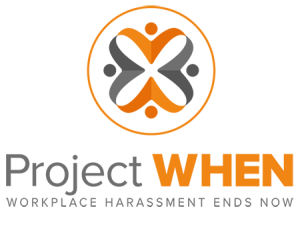The Risk of Presenteeism in the Open Office Workplace
 Presenteeism is the act of attending work while sick. For many of us, presenteeism has been engrained into our lives from a young age. Schools limit sick days and discourage students from missing class. As with work, in school you never know when you will really need that sick day. We only half-jokingly refer to elementary schools as petri dishes. Many opponents of open office environments are concerned that open plans will create a similar environment that results in an increased likelihood of illnesses spreading. A recent article on the US Department of Health & Human Services’ Healthfinder.gov, “Offices With Open Floor Plans Tied to More Sick Days“, cites a Swedish study claiming just that, but let’s take a closer look at why that may be the case.
Presenteeism is the act of attending work while sick. For many of us, presenteeism has been engrained into our lives from a young age. Schools limit sick days and discourage students from missing class. As with work, in school you never know when you will really need that sick day. We only half-jokingly refer to elementary schools as petri dishes. Many opponents of open office environments are concerned that open plans will create a similar environment that results in an increased likelihood of illnesses spreading. A recent article on the US Department of Health & Human Services’ Healthfinder.gov, “Offices With Open Floor Plans Tied to More Sick Days“, cites a Swedish study claiming just that, but let’s take a closer look at why that may be the case.
In reality, whether you work in a traditional office environment or an open office environment, it just doesn’t make much sense for contagious people to come to the office for work. When our clients make the move to open office environments, we always recommend a thorough review (done by both their team and ours) of any policies they have related to working from home. We’ll also work with our clients to develop guidelines, protocols, and etiquette for working in what is often a dramatically different work environment. The spread of germs is always one of the top concerns!
Do you see this often at work?
-You feel that you must be on your death bed/going to see a doctor for pneumonia or bronchitis if you stay home from work.
-People come into work sick even when there is no way to be productive.
-People apologizing profusely and/or rattling off descriptive symptoms of the illness and the details of the past 24 hours if they do stay home:
- “I could barely move!”
- “I’m pretty sure I lost 5 lbs. in one day.”
- “Let’s just say- it wasn’t pretty. You wouldn’t want to be anywhere near me.”
- “My nose was a faucet and I felt like the room was spinning.”
Establish Remote Working Policies
With the benefits of easier collaboration come additional considerations. In addition to considering workplace etiquette, storage options, and providing plenty of private “heads-down” spaces, organizations committing to an open office plan also need to take another look at their remote working policies. Many employees believe that they must be in the office in order to be seen as a dedicated worker, even if they are sick. What we do not recommend is going to remote work options for sick employees without establishing clear guidelines.
There are varying degrees of illness. Some require actually taking the day off, while others require simply avoiding the office while contagious as a courtesy to others. The point of allowing remote work is not to help employees avoid working while saving sick days or to get rid of sick days altogether. The purpose of having remote work options for sick employees is to keep the office and employees happy and healthy–whether they have a full-blown cold or are maybe just a little contagious.
Changing the Culture
By extending workplace flexibility in your organizational culture, your employees can feel empowered, knowing that it’s truly ok for them to stay at home if they’re sick. Whether team members can barely get out of bed, or are just starting to feel a cold come on, it’s important for employees to not feel like they need to “tough it out” and come in when they’re sick. Understanding rewards and consequences is something we often discuss with clients. If the prevailing sentiment is to frown upon the usage of sick time and to reward employees for being martyrs who come in and work no matter how they’re feeling, simply offering some telework is not going to change the culture. Discussions with managers, communications to team members, and ultimately, the behavior displayed by leadership will determine the success of this change.
If this is something your organization is struggling with, or if you’re considering a move to a more open work environment, Stegmeier Consulting Group can help. In being a resource to guide you through the transition, our consultants can work with your team to develop the right strategy for moving forward, meet with the various layers of your organization to discuss changes and achieve buy-in, and craft messaging to keep your workforce informed throughout. Head over to our Services page to see how else we can help, or contact us to learn more.
—–
 Elizabeth Anderson is a Consultant in Change Management with Stegmeier Consulting Group whose professional role supporting clients with their workplace transformation initiatives is enhanced by her experience in providing strategic occupancy solutions that address the financial, operational, and workforce implications of the changing work environment. Elizabeth’s career background includes a role as Occupancy Planner for Jones Lang LaSalle (JLL) in Seattle and Staff Accountant for Moss Adams, LLP in Tacoma.
Elizabeth Anderson is a Consultant in Change Management with Stegmeier Consulting Group whose professional role supporting clients with their workplace transformation initiatives is enhanced by her experience in providing strategic occupancy solutions that address the financial, operational, and workforce implications of the changing work environment. Elizabeth’s career background includes a role as Occupancy Planner for Jones Lang LaSalle (JLL) in Seattle and Staff Accountant for Moss Adams, LLP in Tacoma.



